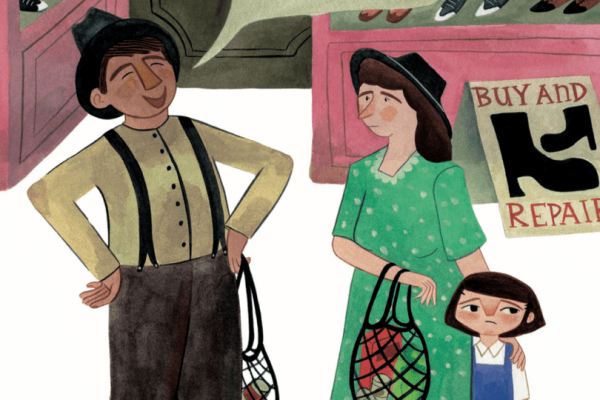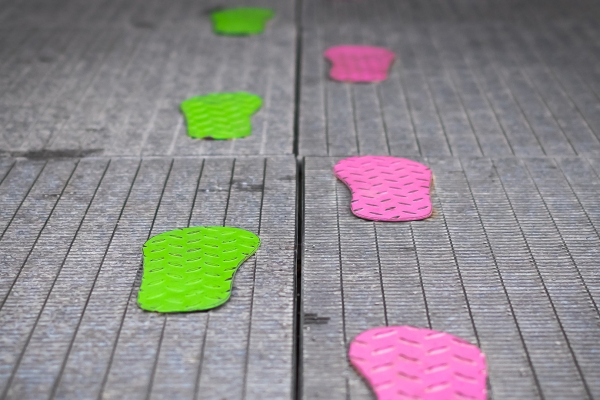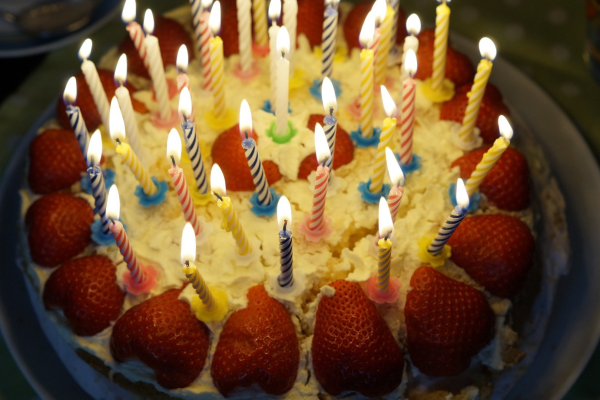Erin Le Clerc is pretty much what you get if you give a whimsical fairy princess a backbone of steel. Psychologist by day and scribbler by night, one minute she’s doling out pragmatic life advice, the next talking about the ghosts in her childhood home (an abandoned hospital). I’ve known her for at least a decade – first online and then in person – and she’s become one of my very favourite people in the world. And I mean the world: she’s based in Queensland, Australia, whereas I’m in London, UK.
When Erin finally realised a lifelong dream of publishing her first book with illustrator Tisha Almas – a smart, inclusive picture book called I’ve Got A Cow Called Maureen – I was thrilled for her. Even more so, I was thrilled for the kids who’d get to read a story about finding your own path and potential. So I invited Erin here to have a chat about her writing process, inclusivity and what we can expect from her in the future.
How long did it take to develop Maureen, and what were the biggest things you learned along the way?
In terms of a completed first draft, Maureen took several rounds of feedback with my critique group over a few weeks, and then a little more once my editor at Clear Fork acquired the manuscript. The shape of the story didn’t change, but we made small adjustments to language right up to the final illustrated draft! I didn’t know that illustrations could impact on text placement, but it does! We changed some text to make the layout work, and then it was submitted for publication.
The biggest things I learned were:
1. The importance of critique groups. Having several eyes on a manuscript, providing varied feedback on what works / doesn’t work / what might work, really helped me to see how incredibly diverse we are in our interpretation of a story, but also helped make my work more saleable to an international market.
2. If something in the story is really important, stand up for it! There were a few elements that could have changed, but I felt they were integral parts of my Nana’s true story. After discussing this with my editor, she agreed!
Is there anything you’d do differently next time?
I think the only thing I’d tell “past me” to do differently, is to have more confidence in my voice, and to believe in my capabilities as a storyteller. Being an author is a tricky thing. We do so much of our work in a solitary space, and we’re sharing a part of our hearts and imaginations with the world. It can be difficult to receive feedback and/or criticism, but it’s an important part of storytelling, and can even be enormously joyful!
As the eldest of eight and auntie to a 4yo, you’ve read your fair share of picture books! What do you look for in a great picture book, and who are your favourite PB authors and illustrators?
I love picture books that make me feel something profound, are heart-felt or heart-warming, or that make me laugh. Recently, I was reorganising my picture book collection, and realised that the majority came from Affirm Press. My goal is to have them acquire some of my work in the future, because I clearly resonate with the stories they love!
As for favourite authors and illustrators, there are too many to mention! I love Anna Walker’s writing and illustration style, and Mem Fox’s early work is a perennial favourite (Possum Magic!). I recently read ‘That’s Not A Hippopotamus’ by Juliette MacIver, illustrated by Sarah Davis, and it’s the funniest things I’ve read in years! I’m talking genuinely laugh-out-loud funny! I also met the incredibly kind and talented Emma Quay at an SCBWI (Society of Children’s Book Writers and Illustrators) conference recently, and her illustration style is so colourful and beautiful, and her stories warm and inviting. I also love what I call “gently psychological” stories, and Eva Eland’s ‘When Sadness Comes To Call’ is gorgeous, and a recent favourite.
Picture books may be written for children, but there are so many layers in storytelling and illustration. They explain profound elements of the human experience with simplicity and grace, and I think adults benefit from reading them too!

How did the real-life Maureen receive the book?
My darling Nana has dementia, so each time I read her the story, it’s the ‘first time’ she’s heard it. She loves it every single time, bless her. The first time she saw the colour-printed PDF of the story and illustrations was at our Christmas dinner last year (before I got my first properly printed copy), and she cried so much, that I had to stop reading because I was crying too, and had to get my husband to read the rest! My family, who were there, were all crying too! This story is incredibly special to my whole family, because we love Nana SO much, and she’s inspired all of us to use our talents to the best of our abilities.
My Nana has been my hero since childhood. She is my encourager, and the person in my life who has always believed in me, and loved me completely unconditionally. I regularly announce that she’s “the best person who ever lived in the history of Earth,” and I’m never joking when I say it! Everyone who meets her says how loved they feel by her beautiful heart.
How important was it for your first book to be inclusive? Did you read other children’s books about disability or hearing loss specifically or did you consider there should be more of them?
To be honest, I didn’t set out to tell ‘an inclusive story’ – I just wanted to share my Nana’s amazing achievements. Nana isn’t a household name in Australia, but she’s such an extraordinary woman, and was SO ahead of her time in so many ways. This story came from my love for her (and it’s all true!).
My Nana was part-deaf and didn’t find this out until adulthood. She did poorly at school, and believed she was inadequate, but really she just couldn’t hear much of what was going on, and had to muddle her way through school. The fact that she used what hearing she had to teach herself to yodel absolutely blows me away! She was entirely self-taught, never professionally trained, and still became Australia’s Champion Swiss Yodeller in the 1940s!
I didn’t read any texts about hearing loss while developing this manuscript, because to me, I was just telling Nana’s story. That said, I did consult a sensitivity reader before it went to press, to ensure that ‘part-deaf’ was the correct terminology.
I think that published books should represent the diversity of the human race. They should celebrate our differences, as well as what makes us similar! We should all have the opportunity to be reflected in the books we read. I’ve been delighted to see a significant shift towards representation of diversity in the publishing industry in the past few years.
Can you tell us anything about your works in progress?
I am a psychologist by trade, so I’ve been developing several “gently psychological” texts in the last few months, and I’m currently sending them out to agents, in the hope of finding representation!
I like to gently present opportunities to learn a skill that will help with emotional regulation. The manuscripts I’m sending out at present are about dealing with feeling grumpy, using mindfulness to feel calm, and setting body boundaries for safety. This sounds terribly serious, I’m sure, but I always seem to end up with humorous or whimsical elements in the stories I tell too! I think we learn better when we are laughing. 🙂
You can pick up a copy of I’ve Got A Cow Called Maureen on Amazon.co.uk (not an affiliate link). Ratings and reviews massively help new authors, so if you’ve read it and enjoy it, please consider adding your feedback!











Thanks for your interview Alexandra. I have read this wonderful book….it is about my mother after all…and I see Maureen’s whimsical nature reappearing in Erin. What a legacy.
Thanks so much for the comment Kerry! You have such a wonderful family – and can certainly take credit for your crucial part in that. ❤️